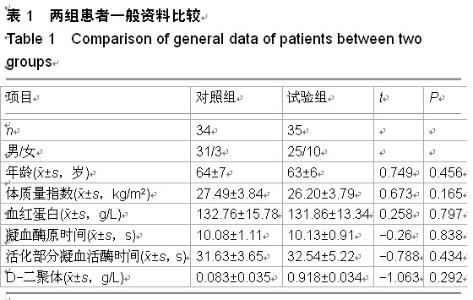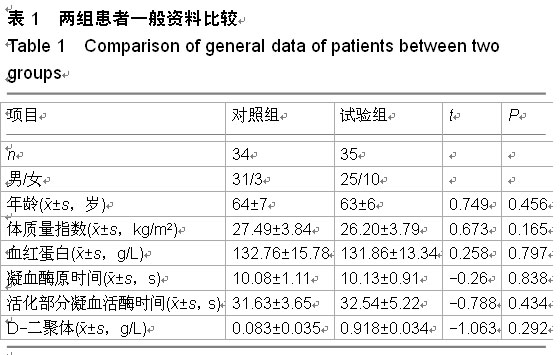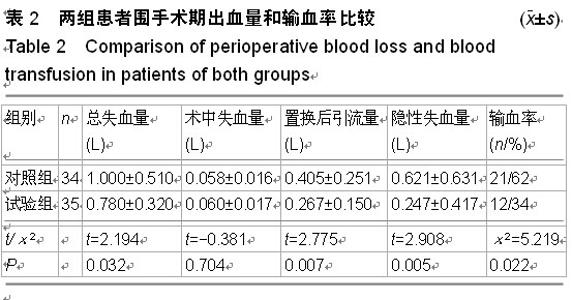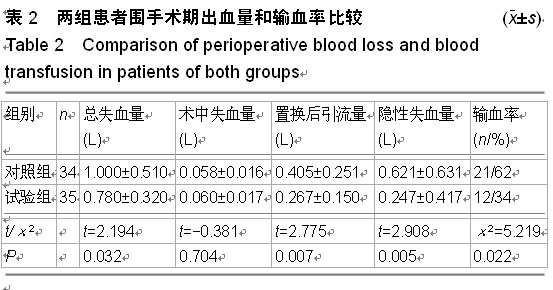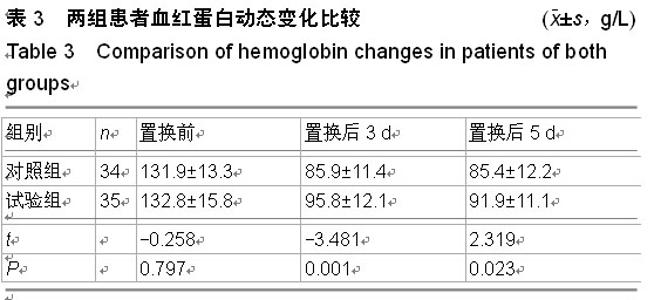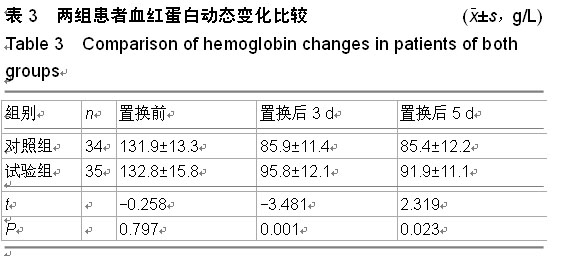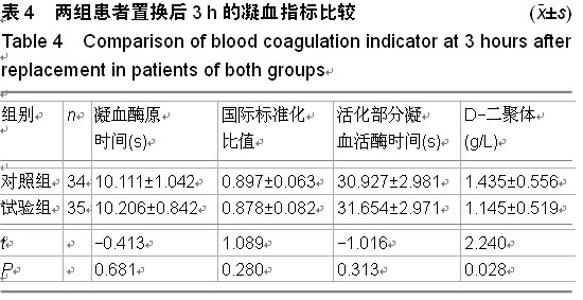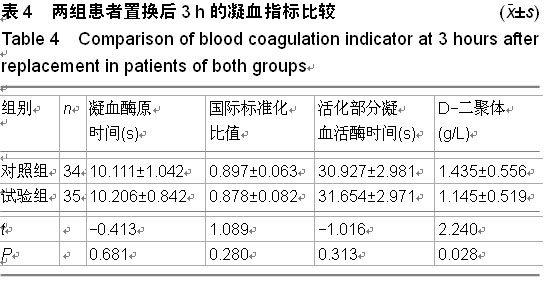Chinese Journal of Tissue Engineering Research ›› 2015, Vol. 19 ›› Issue (22): 3451-3456.doi: 10.3969/j.issn.2095-4344.2015.22.002
Previous Articles Next Articles
Efficacy and safety of tranexamic acid on reducing blood loss in bilateral total knee arthroplasty
Wang Rong1, Tian Shao-qi1, Ha Cheng-zhi1, Song Rui-xue2, Sun Kang1
- 1Department of Orthopedics, Affiliated Hospital of Qingdao University Medical College, Qingdao 266003, Shandong Province, China; 2Department of Anesthesiology, Zhongshan Hospital, Fudan University, Shanghai 200032, China)
-
Received:2015-04-17Online:2015-05-28Published:2015-05-28 -
About author:Wang R, Tian SQ, Ha CZ, Song RX, Sun K. Efficacy and safety of tranexamic acid on reducing blood loss in bilateral total knee arthroplasty. Zhongguo Zuzhi Gongcheng Yanjiu. 2015;19(22):3451-3456.
CLC Number:
Cite this article
Wang Rong, Tian Shao-qi, Ha Cheng-zhi, Song Rui-xue, Sun Kang. Efficacy and safety of tranexamic acid on reducing blood loss in bilateral total knee arthroplasty[J]. Chinese Journal of Tissue Engineering Research, 2015, 19(22): 3451-3456.
share this article
| [1] Memtsoudis S G, Sun X, Chiu YL, et al. Utilization of critical care services among patients undergoing total hip and knee arthroplasty: epidemiology and risk factors. Anesthesiology. 2012;117(1):107-116. [2] Panteli M, Papakostidis C, Dahabreh Z, et al. Topical tranexamic acid in total knee replacement: a systematic review and meta-analysis. Knee. 2013;20(5):300-309. [3] MacGillivray RG, Tarabichi SB, Hawari MF, et al. Tranexamic Acid to Reduce Blood Loss After Bilateral Total Knee Arthroplasty : A Prospective, Randomized Double Blind Study. J Arthroplasty. 2011;26(1):24-28. [4] Cushner FD, Friedman RJ. Blood loss in total knee arthroplasty. Clin Orthop Relat Res. 1991;(269):98-101. [5] Hynes MC, Calder P, Rosenfeld P, et al. The use of tranexamic acid to reduce blood loss during total hip arthroplasty: an observational study. Ann R Coll Surg Engl. 2005;87(2):99-101. [6] MacGillivray RG, Tarabichi SB, Hawari MF, et al. Tranexamic acid to reduce blood loss after bilateral total knee arthroplasty: a prospective, randomized double blind study. J Arthroplasty. 2011;26(1):24-28. [7] Lemaire R. Strategies for blood management in orthopaedic and trauma surgery. J Bone Joint Surg Br. 2008;90(9): 1128-1136. [8] Salido JA, Marin LA, Gomez LA, et al. Preoperative hemoglobin levels and the need for transfusion after prosthetic hip and knee surgery: analysis of predictive factors. J Bone Joint Surg Am. 2002;84-A(2):216-220. [9] Sinclair KC, Clarke HD, Noble BN. Blood management in total knee arthroplasty: a comparison of techniques. Orthopedics. 2009;32(1):19. [10] Bierbaum BE, Callaghan JJ, Galante JO, et al. An analysis of blood management in patients having a total hip or knee arthroplasty. J Bone Joint Surg Am. 1999;81(1):2-10. [11] Tan J, Chen H, Liu Q, et al. A meta-analysis of the effectiveness and safety of using tranexamic acid in primary unilateral total knee arthroplasty. J Surg Res.2013;184(2): 880-887. [12] Petaja J, Myllynen P, Myllyla G, et al. Fibrinolysis after application of a pneumatic tourniquet. Acta Chir Scand. 1987; 153(11-12):647-651. [13] Klenerman L, Chakrabarti R, Mackie I, et al. Changes in haemostatic system after application of a tourniquet. Lancet. 1977;1(8019):970-972. [14] Murkin JM. Lessons learned in antifibrinolytic therapy: The BART trial. Semin Cardiothorac Vasc Anesth. 2009;13(2): 127-131. [15] Akizuki S, Yasukawa Y, Takizawa T. A new method of hemostasis for cementless total knee arthroplasty. Bull Hosp Jt Dis. 1997;56(4):222-224. [16] 刘江俊,刘忠强,田少奇,等.氨甲环酸对减少单侧全膝关节置换术后出血的疗效观察[J].中国矫形外科杂志, 2014,22(23): 2144-2148. [17] McCormack PL. Tranexamic acid: a review of its use in the treatment of hyperfibrinolysis. Drugs. 2012;72(5):585-617. [18] Tanaka N, Sakahashi H, Sato E, et al. Timing of the administration of tranexamic acid for maximum reduction in blood loss in arthroplasty of the knee. J Bone Joint Surg Br. 2001;83(5):702-705. [19] Xu Q, Yang Y, Shi P, et al. Repeated doses of intravenous tranexamic acid are effective and safe at reducing perioperative blood loss in total knee arthroplasty. Biosci Trends. 2014; 8(3):169-175. [20] Maniar RN, Kumar G, Singhi T, et al. Most effective regimen of tranexamic acid in knee arthroplasty: a prospective randomized controlled study in 240 patients. Clin Orthop Relat Res. 2012; 470(9):2605-2612. [21] Irisson E, Hemon Y, Pauly V, et al. Tranexamic acid reduces blood loss and financial cost in primary total hip and knee replacement surgery. Orthop Traumatol Surg Res.2012;98(5): 477-483. [22] Oremus K, Sostaric S, Trkulja V, et al. Influence of tranexamic acid on postoperative autologous blood retransfusion in primary total hip and knee arthroplasty: a randomized controlled trial. Transfusion. 2014;54(1):31-41. [23] Yang ZG, Chen WP, Wu LD. Effectiveness and safety of tranexamic acid in reducing blood loss in total knee arthroplasty: a meta-analysis. J Bone Joint Surg Am. 2012; 94(13):1153-1159. [24] Shemshaki H, Nourian SMA, Nourian N, et al. One step closer to sparing total blood loss and transfusion rate in total knee arthroplasty: a meta-analysis of different methods of tranexamic acid administration. Arch Orthop Trauma Surg. 2015;135(4):573-588. [25] Tan J, Chen H, Liu Q, et al. A meta-analysis of the effectiveness and safety of using tranexamic acid in primary unilateral total knee arthroplasty. J Surg Res. 2013;184(2):880-887. [26] Gandhi R, Evans HM, Mahomed SR, et al. Tranexamic acid and the reduction of blood loss in total knee and hip arthroplasty: a meta-analysis. BMC Res Notes. 2013;6:184. [27] Zhang H, Chen J, Chen F, et al. The effect of tranexamic acid on blood loss and use of blood products in total knee arthroplasty: a meta-analysis. Knee Surg Sports Traumatol Arthrosc. 2012;20(9):1742-1752. [28] Karaaslan F, Karao?lu S, Mermerkaya MU, et al. Reducing blood loss in simultaneous bilateral total knee arthroplasty: Combined intravenous-intra-articular tranexamic acid administration. A prospective randomized controlled trial. Knee. 2015;22(2):131-135. [29] Qu Y. Effectiveness and Safety of Tranexamic Acid for Total Knee Arthroplasty: A Prospective Randomized Controlled Trial. Med Sci Monit. 2015;21:576-581. [30] Wu Q, Zhang H, Liu S, et al. Is tranexamic acid clinically effective and safe to prevent blood loss in total knee arthroplasty? A meta-analysis of 34 randomized controlled trials. Eur J Orthop Surg. 2015;25(3):525-541. [31] Karam JA, Bloomfield MR, DiIorio TM, et al. Evaluation of the Efficacy and Safety of Tranexamic Acid for Reducing Blood Loss in Bilateral Total Knee Arthroplasty. J Arthroplasty. 2014;29(3): 501-503. [32] Poeran J, Rasul R, Suzuki S, et al. Tranexamic acid use and postoperative outcomes in patients undergoing total hip or knee arthroplasty in the United States: retrospective analysis of effectiveness and safety. BMJ. 2014;349:g4829. [33] Sabatini L, Atzori F, Revello S, et al. Intravenous use of tranexamic acid reduces postoperative blood loss in total knee arthroplasty. Arch Orthop Trauma Surg. 2014;134(11): 1609-1614. [34] 马金辉,孙伟,高福强,等.关节腔注射氨甲环酸单侧全膝关节置换者的失血量及肢体周径变化:随机对照[J].中国组织工程研究, 2014,18(35):5577-5582. [35] Alipour M, Tabari M, Keramati M, et al. Effectiveness of oral Tranexamic acid administration on blood loss after knee artroplasty: A randomized clinical trial. Transfus Apher Sci. 2013;49(3):574-577. [36] Georgiadis AG, Muh SJ, Silverton CD, et al. A prospective double-blind placebo controlled trial of topical tranexamic acid in total knee arthroplasty. J Arthroplasty. 2013;28(8 Suppl):78-82. [37] Lee SH, Cho KY, Khurana S, et al. Less blood loss under concomitant administration of tranexamic acid and indirect factor Xa inhibitor following total knee arthroplasty: a prospective randomized controlled trial. Knee Surg Sports Traumatol Arthrosc. 2013;21(11):2611-2617. [38] Lozano M, Basora M, Peidro L, et al. Effectiveness and safety of tranexamic acid administration during total knee arthroplasty. Vox Sang. 2008;95(1):39-44. [39] Good L, Peterson E, Lisander B. Tranexamic acid decreases external blood loss but not hidden blood loss in total knee replacement. Br J Anaesth. 2003;90(5):596-599. [40] Samujh C, Falls TD, Wessel R, et al. Decreased Blood Transfusion Following Revision Total Knee Arthroplasty Using Tranexamic Acid. J Arthroplasty. 2014;29(9):182-185. [41] Zhang Y, Jin Y, Su L, et al. Clinic research on blood loss control by tranexamic acid during primary unilateral total knee replacement. Orthop J China. 2013;21:762-765. [42] Li Y, Zhang W, Li H. Clinical Studies on Intra-articular Injections of Tranexamic Acid after Total Knee Arthroplasty. Med Philosophy. 2013;34:27-30. [43] Moskal JT, Harris RN, Capps SG. Transfusion Cost Savings with Tranexamic Acid in Primary Total Knee Arthroplasty from 2009 to 2012. J Arthroplasty. 2015;30(3):365-368. [44] Tuttle JR, Ritterman SA, Cassidy DB, et al. Cost Benefit Analysis of Topical Tranexamic Acid in Primary Total Hip and Knee Arthroplasty. J Arthroplasty. 2014;29(8):1512-1515. [45] Chimento GF, Huff T, Ochsner JL, et al. An Evaluation of the Use of Topical Tranexamic Acid in Total Knee Arthroplasty. J Arthroplasty. 2013;28(8):74-77. [46] Pachauri A, Acharya KK, Tiwari AK. The effect of tranexamic acid on hemoglobin levels during total knee arthroplasty. Am J Ther. 2014;21(5):366-370. [47] Mangano DT, Tudor IC, Dietzel C. The risk associated with aprotinin in cardiac surgery. N Engl J Med. 2006;354(4): 353-365. [48] Bruce-Brand R, Dragomir R, Baker J, et al. Cerebrovascular infarction following bilateral total knee arthroplasty and tranexamic acid administration. Acta Orthop Belg. 2013;79(3): 351-354. [49] Dahuja A, Dahuja G, Jaswal V, et al. A Prospective Study on Role of Tranexamic Acid in Reducing Postoperative Blood Loss in Total Knee Arthroplasty and Its Effect on Coagulation Profile. J Arthroplasty. 2014;29(4):733-735. 中国组织工程研究杂志出版内容重点:人工关节;骨植入物;脊柱;骨折;内固定;数字化骨科;组织工程
|
| [1] | Wang Jinjun, Deng Zengfa, Liu Kang, He Zhiyong, Yu Xinping, Liang Jianji, Li Chen, Guo Zhouyang. Hemostatic effect and safety of intravenous drip of tranexamic acid combined with topical application of cocktail containing tranexamic acid in total knee arthroplasty [J]. Chinese Journal of Tissue Engineering Research, 2021, 25(9): 1356-1361. |
| [2] | Zhang Chong, Liu Zhiang, Yao Shuaihui, Gao Junsheng, Jiang Yan, Zhang Lu. Safety and effectiveness of topical application of tranexamic acid to reduce drainage of elderly femoral neck fractures after total hip arthroplasty [J]. Chinese Journal of Tissue Engineering Research, 2021, 25(9): 1381-1386. |
| [3] | Chen Jinping, Li Kui, Chen Qian, Guo Haoran, Zhang Yingbo, Wei Peng. Meta-analysis of the efficacy and safety of tranexamic acid in open spinal surgery [J]. Chinese Journal of Tissue Engineering Research, 2021, 25(9): 1458-1464. |
| [4] | Yuan Jun, Yang Jiafu. Hemostatic effect of topical tranexamic acid infiltration in cementless total knee arthroplasty [J]. Chinese Journal of Tissue Engineering Research, 2021, 25(6): 873-877. |
| [5] | Huang Dengcheng, Wang Zhike, Cao Xuewei. Intravenous, topical tranexamic acid alone or their combination in total knee arthroplasty: a meta-analysis of randomized controlled trials [J]. Chinese Journal of Tissue Engineering Research, 2021, 25(6): 948-956. |
| [6] | Zhan Fangbiao, Cheng Jun, Zou Xinsen, Long Jie, Xie Lizhong, Deng Qianrong. Intraoperative intravenous application of tranexamic acid reduces perioperative bleeding in multilevel posterior spinal surgery: a meta-analysis [J]. Chinese Journal of Tissue Engineering Research, 2021, 25(6): 977-984. |
| [7] | Lü Zexiang, Wu Jutai, Jiang Jian, Feng Xiao, Li Tengfei, Wang Yehua. Effect of tranexamic acid combined with carbazochrome sodium sulfonate on blood loss and safety after total knee arthroplasty [J]. Chinese Journal of Tissue Engineering Research, 2021, 25(3): 386-390. |
| [8] | Wang Hao, Wang Yitao, Lü Zexiang, Li Tengfei, Wang Shaolong, Wang Yehua. Effect of repeated intravenous tranexamic acid in the perioperative period of proximal femoral nail antirotation for femoral intertrochanteric fracture [J]. Chinese Journal of Tissue Engineering Research, 2021, 25(21): 3319-3323. |
| [9] | Jing Jinpeng, Zhang Yue, Liu Xiaomin, Liu Yi. Buyang Huanwu Decoction in prevention of deep venous thrombosis after orthopedic surgery: meta-analysis and trial sequential analysis [J]. Chinese Journal of Tissue Engineering Research, 2021, 25(20): 3267-3274. |
| [10] | Liu Jinlei, Yin Li, Zhang Yi, Wang Haitao, Li Zhuangyan, Xia Peige, Qiao Renqiu. Effects of intravenous tranexamic acid combined with periarticular multipoint injection of tranexamic acid cocktail on blood loss and pain after total knee arthroplasty [J]. Chinese Journal of Tissue Engineering Research, 2021, 25(18): 2833-2839. |
| [11] | Chen Wang, Feng Shuo, Zhang Yu, Chen Xiangyang. Efficacy and safety of tranexamic acid and epsilon-aminocaproic acid in reducing perioperative blood loss during total knee arthroplasty: a meta-analysis [J]. Chinese Journal of Tissue Engineering Research, 2021, 25(15): 2430-2436. |
| [12] | Gao Fenghe, Chen Tongying, Lin Jiebin, Liang Zujian. Efficacy and safety of tranexamic acid combined with rivaroxaban in primary total knee and hip arthroplasties: a meta-analysis [J]. Chinese Journal of Tissue Engineering Research, 2021, 25(15): 2453-2460. |
| [13] | Ma Zhen, Liang Da, Wu Xiaolin, Zhong Wei . Safety evaluation of tranexamic acid in reducing perioperative blood loss in high tibial osteotomy [J]. Chinese Journal of Tissue Engineering Research, 2021, 25(12): 1847-1852. |
| [14] | Zhou Qi, Gao Yi, Wei Kang, Li Jun, Xu Jianda, Jiang Yang, Qu Yuxing. Total knee arthroplasty for rheumatoid arthritis: knee function and biochemical index changes [J]. Chinese Journal of Tissue Engineering Research, 2020, 24(9): 1337-1341. |
| [15] | Zheng Zhihui, Chen Sheng, Guan Keli, Zheng Xun, Chen Haibo, Zeng Qingqiang. Relationship between blood loss of proximal femoral nail anti-rotation fixation and local use combined with intravenous injection of tranexamic acid [J]. Chinese Journal of Tissue Engineering Research, 2020, 24(9): 1359-1364. |
| Viewed | ||||||
|
Full text |
|
|||||
|
Abstract |
|
|||||
